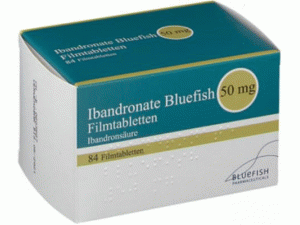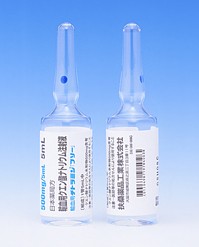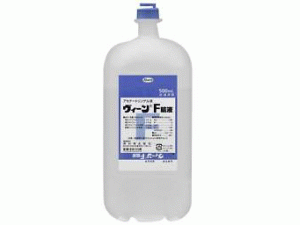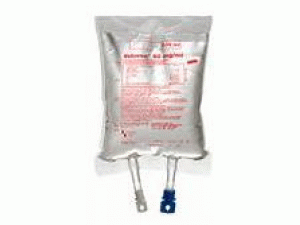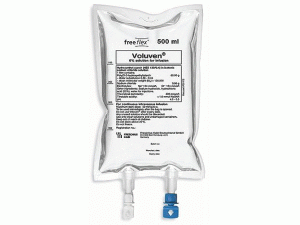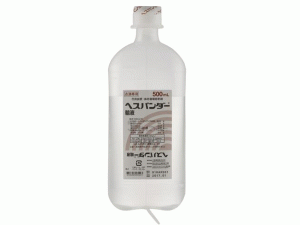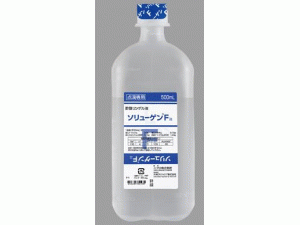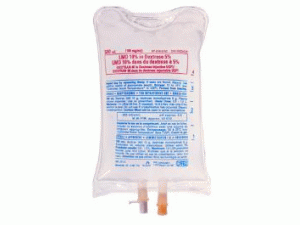右旋糖酐_Dextran_葡聚糖说明书
[caption id="attachment_43255" align="alignleft" width="300"]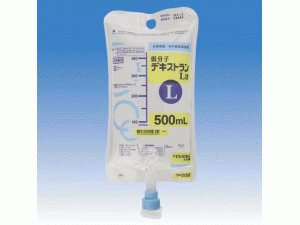 LOW MOLECULAR DEXTRAN L INJECTION(右旋糖酐,低分子デキストランL注)[/caption]
药店国别:
产地国家:日本
处 方 药:是
所属类别:500毫升 20袋/箱
包装规格:500毫升 20袋/箱
计价单位:箱
生产厂家中文参考译名:大冢
生产厂家英文名:Otsuka
原产地英文商品名:LOW MOLECULAR DEXTRAN L INJECTION 500ml 20bags
原产地英文药品名:Dextran
中文参考商品译名:LMD 注射剂 500毫升 20袋/箱
中文参考药品译名:右旋糖酐
简介:
中文名称:右旋糖酐;葡聚糖;葡聚精;右旋糖酐 40
英文名称:dextran 1;dextran 2;dextran 5;dextran 10;dextran 11;dextrans;low molecular dextran-l;rheomacrodex;Macrose
用途:血容量补充药,有降低血液粘度;改善微循环和抗血栓作用。
Indications and Usage for LMD Injection
LMD Injection - Clinical Pharmacology
The fundamental action of LMD (dextran 40) is the enhancement of blood flow, particularly in the microcirculation. This enhancement is due to:
Its primary effect of volume expansion with resultant hemodilution;Maintenance of the electronegativity of red blood cells;Coating of red blood cells and platelets;Increase in the suspension stability of blood;Decrease in the viscosity of blood.
It should be emphasized that the above effects are not exerted separately, but conjointly they result in the enhancement of blood flow.
LMD, used in the treatment of shock, produces significant increases in blood volume, central venous pressure, cardiac output, stroke volume, blood pressure and urinary output.
It reduces blood viscosity, peripheral resistance and improves peripheral blood flow
with the release of sequestered blood cells, thereby increasing venous return to the heart.
When used as part of the pump prime for extracorporeal procedures, LMD, as compared to whole blood, albumin 5%, or whole blood plus 5% dextrose and water, leads to less destruction of red blood cells and platelets, reduces intravascular hemagglutination and maintains erythrocyte electronegativity.
The infusion of LMD (dextran 40) during and after surgical trauma reduces the incidence of deep venous thrombosis (DVT) and pulmonary embolism (PE) in patients subject to surgical procedures with a high incidence of thromboembolic complication. Unlike antithrombogenic agents of the anticoagulant type, LMD does not achieve its effect so much by blocking fibrinogen-fibrin conversion but acts by simultaneously inhibiting other mechanisms essential to thrombus formation such as vascular stasis and platelet adhesiveness and by altering the structure and thereby the lysability of fibrin clots.
Histopathological studies have shown that the development of a mural platelet thrombus is the first stage of thrombus formation not only in the arterial, but also in the venous system. A number of studies have further shown that many patients who develop thromboembolic complications show an abnormally high platelet adhesiveness.
Infusion of LMD has been shown to reduce platelet adhesiveness as measured by various in vitro tests on blood samples obtained from humans and to inhibit the growth of a mural platelet thrombus at the site of experimental (laser beam) injury in the rabbit’s ear chamber.
Studies have shown an increase in the lysability of thrombi formed in the presence of dextran.
A consistent and characteristic alteration in fibrin structure has been observed when fibrin is formed in the presence of dextran, and further experiments demonstrated such fibrin to be more susceptible to plasmin digestion. Other studies have shown that dextran infused into patients during surgery increases the lysability of ex vivo thrombi.
Controlled clinical trials have shown that thrombi in patients treated with dextran have a more pronounced tendency to undergo lysis as determined by phlebography.
LMD is evenly distributed in the vascular system. Its distribution according to molecular weight shifts toward higher molecular weights as the smaller molecules are excreted by the kidney. In normovolemic subjects, approximately 50% is excreted within 3 hours, 60% is excreted within 6 hours and about 75% within 24 hours. Reabsorption of dextran by the renal tubules is negligible.
The unexcreted molecules of dextran diffuse into the extravascular compartment and
are temporarily taken up by the reticuloendothelial system. Some of these molecules are returned to the intravascular compartment via the lymphatics. Dextran is slowly degraded by the enzyme dextranase to glucose.
Solutions containing carbohydrate in the form of dextrose restore blood glucose levels and provide calories. Carbohydrate in the form of dextrose may aid in minimizing liver glycogen depletion and exerts a protein sparing action. Dextrose injected parenterally undergoes oxidation to carbon dioxide and water.
Sodium chloride in water dissociates to provide sodium (Na+) and chloride (Clˉ) ions.
Sodium (Na+) is the principal cation of the extracellular fluid and plays a large part in the therapy of fluid and electrolyte disturbances. Chloride (Clˉ) has an integral role in buffering action when oxygen and carbon dioxide exchange occurs in
red blood cells.
The distribution and excretion of sodium (Na+) and chloride (Clˉ) are largely under the control of the kidney, which maintains a balance between intake and output.
Water is an essential constituent of all body tissues and accounts for approximately 70% of total body weight. Average normal adult daily requirement ranges from two to three liters (1.0 to 1.5 liters each for insensible water loss by perspiration and urine production).
Water balance is maintained by various regulatory Water distribution depends primarily on the concentration of electrolytes in the body compartments and sodium (Na+) plays a major role in maintaining physiologic equilibrium.
LMD (dextran 40) is indicated for use in the adjunctive treatment of shock or impending shock due to hemorrhage, burns, surgery or other trauma. It is not indicated as a replacement for whole blood or blood components if they are available. It should not replace other forms of therapy known to be of value in the treatment of shock.
LMD is also indicated for use as a priming fluid, either as a sole prime or as an additive, in pump oxygenators during extracorporeal circulation.
LMD is also indicated for use in prophylaxis of venous thrombosis and pulmonary embolism in patients undergoing procedures known to be associated with a high incidence of thromboembolic complications, such as hip surgery./p> Contraindications
LMD (dextran 40) is contraindicated in patients with known hypersensitivity to dextran, in those with marked hemostatic defects of all types (thrombocytopenia, hypofibrinogenemia, etc.) including those caused by drugs (heparin, warfarin, etc.), marked cardiac decompensation and in renal disease with severe oliguria or anuria.
LOW MOLECULAR DEXTRAN L INJECTION(右旋糖酐,低分子デキストランL注)[/caption]
药店国别:
产地国家:日本
处 方 药:是
所属类别:500毫升 20袋/箱
包装规格:500毫升 20袋/箱
计价单位:箱
生产厂家中文参考译名:大冢
生产厂家英文名:Otsuka
原产地英文商品名:LOW MOLECULAR DEXTRAN L INJECTION 500ml 20bags
原产地英文药品名:Dextran
中文参考商品译名:LMD 注射剂 500毫升 20袋/箱
中文参考药品译名:右旋糖酐
简介:
中文名称:右旋糖酐;葡聚糖;葡聚精;右旋糖酐 40
英文名称:dextran 1;dextran 2;dextran 5;dextran 10;dextran 11;dextrans;low molecular dextran-l;rheomacrodex;Macrose
用途:血容量补充药,有降低血液粘度;改善微循环和抗血栓作用。
Indications and Usage for LMD Injection
LMD Injection - Clinical Pharmacology
The fundamental action of LMD (dextran 40) is the enhancement of blood flow, particularly in the microcirculation. This enhancement is due to:
Its primary effect of volume expansion with resultant hemodilution;Maintenance of the electronegativity of red blood cells;Coating of red blood cells and platelets;Increase in the suspension stability of blood;Decrease in the viscosity of blood.
It should be emphasized that the above effects are not exerted separately, but conjointly they result in the enhancement of blood flow.
LMD, used in the treatment of shock, produces significant increases in blood volume, central venous pressure, cardiac output, stroke volume, blood pressure and urinary output.
It reduces blood viscosity, peripheral resistance and improves peripheral blood flow
with the release of sequestered blood cells, thereby increasing venous return to the heart.
When used as part of the pump prime for extracorporeal procedures, LMD, as compared to whole blood, albumin 5%, or whole blood plus 5% dextrose and water, leads to less destruction of red blood cells and platelets, reduces intravascular hemagglutination and maintains erythrocyte electronegativity.
The infusion of LMD (dextran 40) during and after surgical trauma reduces the incidence of deep venous thrombosis (DVT) and pulmonary embolism (PE) in patients subject to surgical procedures with a high incidence of thromboembolic complication. Unlike antithrombogenic agents of the anticoagulant type, LMD does not achieve its effect so much by blocking fibrinogen-fibrin conversion but acts by simultaneously inhibiting other mechanisms essential to thrombus formation such as vascular stasis and platelet adhesiveness and by altering the structure and thereby the lysability of fibrin clots.
Histopathological studies have shown that the development of a mural platelet thrombus is the first stage of thrombus formation not only in the arterial, but also in the venous system. A number of studies have further shown that many patients who develop thromboembolic complications show an abnormally high platelet adhesiveness.
Infusion of LMD has been shown to reduce platelet adhesiveness as measured by various in vitro tests on blood samples obtained from humans and to inhibit the growth of a mural platelet thrombus at the site of experimental (laser beam) injury in the rabbit’s ear chamber.
Studies have shown an increase in the lysability of thrombi formed in the presence of dextran.
A consistent and characteristic alteration in fibrin structure has been observed when fibrin is formed in the presence of dextran, and further experiments demonstrated such fibrin to be more susceptible to plasmin digestion. Other studies have shown that dextran infused into patients during surgery increases the lysability of ex vivo thrombi.
Controlled clinical trials have shown that thrombi in patients treated with dextran have a more pronounced tendency to undergo lysis as determined by phlebography.
LMD is evenly distributed in the vascular system. Its distribution according to molecular weight shifts toward higher molecular weights as the smaller molecules are excreted by the kidney. In normovolemic subjects, approximately 50% is excreted within 3 hours, 60% is excreted within 6 hours and about 75% within 24 hours. Reabsorption of dextran by the renal tubules is negligible.
The unexcreted molecules of dextran diffuse into the extravascular compartment and
are temporarily taken up by the reticuloendothelial system. Some of these molecules are returned to the intravascular compartment via the lymphatics. Dextran is slowly degraded by the enzyme dextranase to glucose.
Solutions containing carbohydrate in the form of dextrose restore blood glucose levels and provide calories. Carbohydrate in the form of dextrose may aid in minimizing liver glycogen depletion and exerts a protein sparing action. Dextrose injected parenterally undergoes oxidation to carbon dioxide and water.
Sodium chloride in water dissociates to provide sodium (Na+) and chloride (Clˉ) ions.
Sodium (Na+) is the principal cation of the extracellular fluid and plays a large part in the therapy of fluid and electrolyte disturbances. Chloride (Clˉ) has an integral role in buffering action when oxygen and carbon dioxide exchange occurs in
red blood cells.
The distribution and excretion of sodium (Na+) and chloride (Clˉ) are largely under the control of the kidney, which maintains a balance between intake and output.
Water is an essential constituent of all body tissues and accounts for approximately 70% of total body weight. Average normal adult daily requirement ranges from two to three liters (1.0 to 1.5 liters each for insensible water loss by perspiration and urine production).
Water balance is maintained by various regulatory Water distribution depends primarily on the concentration of electrolytes in the body compartments and sodium (Na+) plays a major role in maintaining physiologic equilibrium.
LMD (dextran 40) is indicated for use in the adjunctive treatment of shock or impending shock due to hemorrhage, burns, surgery or other trauma. It is not indicated as a replacement for whole blood or blood components if they are available. It should not replace other forms of therapy known to be of value in the treatment of shock.
LMD is also indicated for use as a priming fluid, either as a sole prime or as an additive, in pump oxygenators during extracorporeal circulation.
LMD is also indicated for use in prophylaxis of venous thrombosis and pulmonary embolism in patients undergoing procedures known to be associated with a high incidence of thromboembolic complications, such as hip surgery./p> Contraindications
LMD (dextran 40) is contraindicated in patients with known hypersensitivity to dextran, in those with marked hemostatic defects of all types (thrombocytopenia, hypofibrinogenemia, etc.) including those caused by drugs (heparin, warfarin, etc.), marked cardiac decompensation and in renal disease with severe oliguria or anuria.
 LOW MOLECULAR DEXTRAN L INJECTION(右旋糖酐,低分子デキストランL注)[/caption]
药店国别:
产地国家:日本
处 方 药:是
所属类别:500毫升 20袋/箱
包装规格:500毫升 20袋/箱
计价单位:箱
生产厂家中文参考译名:大冢
生产厂家英文名:Otsuka
原产地英文商品名:LOW MOLECULAR DEXTRAN L INJECTION 500ml 20bags
原产地英文药品名:Dextran
中文参考商品译名:LMD 注射剂 500毫升 20袋/箱
中文参考药品译名:右旋糖酐
简介:
中文名称:右旋糖酐;葡聚糖;葡聚精;右旋糖酐 40
英文名称:dextran 1;dextran 2;dextran 5;dextran 10;dextran 11;dextrans;low molecular dextran-l;rheomacrodex;Macrose
用途:血容量补充药,有降低血液粘度;改善微循环和抗血栓作用。
Indications and Usage for LMD Injection
LMD Injection - Clinical Pharmacology
The fundamental action of LMD (dextran 40) is the enhancement of blood flow, particularly in the microcirculation. This enhancement is due to:
Its primary effect of volume expansion with resultant hemodilution;Maintenance of the electronegativity of red blood cells;Coating of red blood cells and platelets;Increase in the suspension stability of blood;Decrease in the viscosity of blood.
It should be emphasized that the above effects are not exerted separately, but conjointly they result in the enhancement of blood flow.
LMD, used in the treatment of shock, produces significant increases in blood volume, central venous pressure, cardiac output, stroke volume, blood pressure and urinary output.
It reduces blood viscosity, peripheral resistance and improves peripheral blood flow
with the release of sequestered blood cells, thereby increasing venous return to the heart.
When used as part of the pump prime for extracorporeal procedures, LMD, as compared to whole blood, albumin 5%, or whole blood plus 5% dextrose and water, leads to less destruction of red blood cells and platelets, reduces intravascular hemagglutination and maintains erythrocyte electronegativity.
The infusion of LMD (dextran 40) during and after surgical trauma reduces the incidence of deep venous thrombosis (DVT) and pulmonary embolism (PE) in patients subject to surgical procedures with a high incidence of thromboembolic complication. Unlike antithrombogenic agents of the anticoagulant type, LMD does not achieve its effect so much by blocking fibrinogen-fibrin conversion but acts by simultaneously inhibiting other mechanisms essential to thrombus formation such as vascular stasis and platelet adhesiveness and by altering the structure and thereby the lysability of fibrin clots.
Histopathological studies have shown that the development of a mural platelet thrombus is the first stage of thrombus formation not only in the arterial, but also in the venous system. A number of studies have further shown that many patients who develop thromboembolic complications show an abnormally high platelet adhesiveness.
Infusion of LMD has been shown to reduce platelet adhesiveness as measured by various in vitro tests on blood samples obtained from humans and to inhibit the growth of a mural platelet thrombus at the site of experimental (laser beam) injury in the rabbit’s ear chamber.
Studies have shown an increase in the lysability of thrombi formed in the presence of dextran.
A consistent and characteristic alteration in fibrin structure has been observed when fibrin is formed in the presence of dextran, and further experiments demonstrated such fibrin to be more susceptible to plasmin digestion. Other studies have shown that dextran infused into patients during surgery increases the lysability of ex vivo thrombi.
Controlled clinical trials have shown that thrombi in patients treated with dextran have a more pronounced tendency to undergo lysis as determined by phlebography.
LMD is evenly distributed in the vascular system. Its distribution according to molecular weight shifts toward higher molecular weights as the smaller molecules are excreted by the kidney. In normovolemic subjects, approximately 50% is excreted within 3 hours, 60% is excreted within 6 hours and about 75% within 24 hours. Reabsorption of dextran by the renal tubules is negligible.
The unexcreted molecules of dextran diffuse into the extravascular compartment and
are temporarily taken up by the reticuloendothelial system. Some of these molecules are returned to the intravascular compartment via the lymphatics. Dextran is slowly degraded by the enzyme dextranase to glucose.
Solutions containing carbohydrate in the form of dextrose restore blood glucose levels and provide calories. Carbohydrate in the form of dextrose may aid in minimizing liver glycogen depletion and exerts a protein sparing action. Dextrose injected parenterally undergoes oxidation to carbon dioxide and water.
Sodium chloride in water dissociates to provide sodium (Na+) and chloride (Clˉ) ions.
Sodium (Na+) is the principal cation of the extracellular fluid and plays a large part in the therapy of fluid and electrolyte disturbances. Chloride (Clˉ) has an integral role in buffering action when oxygen and carbon dioxide exchange occurs in
red blood cells.
The distribution and excretion of sodium (Na+) and chloride (Clˉ) are largely under the control of the kidney, which maintains a balance between intake and output.
Water is an essential constituent of all body tissues and accounts for approximately 70% of total body weight. Average normal adult daily requirement ranges from two to three liters (1.0 to 1.5 liters each for insensible water loss by perspiration and urine production).
Water balance is maintained by various regulatory Water distribution depends primarily on the concentration of electrolytes in the body compartments and sodium (Na+) plays a major role in maintaining physiologic equilibrium.
LMD (dextran 40) is indicated for use in the adjunctive treatment of shock or impending shock due to hemorrhage, burns, surgery or other trauma. It is not indicated as a replacement for whole blood or blood components if they are available. It should not replace other forms of therapy known to be of value in the treatment of shock.
LMD is also indicated for use as a priming fluid, either as a sole prime or as an additive, in pump oxygenators during extracorporeal circulation.
LMD is also indicated for use in prophylaxis of venous thrombosis and pulmonary embolism in patients undergoing procedures known to be associated with a high incidence of thromboembolic complications, such as hip surgery./p> Contraindications
LMD (dextran 40) is contraindicated in patients with known hypersensitivity to dextran, in those with marked hemostatic defects of all types (thrombocytopenia, hypofibrinogenemia, etc.) including those caused by drugs (heparin, warfarin, etc.), marked cardiac decompensation and in renal disease with severe oliguria or anuria.
LOW MOLECULAR DEXTRAN L INJECTION(右旋糖酐,低分子デキストランL注)[/caption]
药店国别:
产地国家:日本
处 方 药:是
所属类别:500毫升 20袋/箱
包装规格:500毫升 20袋/箱
计价单位:箱
生产厂家中文参考译名:大冢
生产厂家英文名:Otsuka
原产地英文商品名:LOW MOLECULAR DEXTRAN L INJECTION 500ml 20bags
原产地英文药品名:Dextran
中文参考商品译名:LMD 注射剂 500毫升 20袋/箱
中文参考药品译名:右旋糖酐
简介:
中文名称:右旋糖酐;葡聚糖;葡聚精;右旋糖酐 40
英文名称:dextran 1;dextran 2;dextran 5;dextran 10;dextran 11;dextrans;low molecular dextran-l;rheomacrodex;Macrose
用途:血容量补充药,有降低血液粘度;改善微循环和抗血栓作用。
Indications and Usage for LMD Injection
LMD Injection - Clinical Pharmacology
The fundamental action of LMD (dextran 40) is the enhancement of blood flow, particularly in the microcirculation. This enhancement is due to:
Its primary effect of volume expansion with resultant hemodilution;Maintenance of the electronegativity of red blood cells;Coating of red blood cells and platelets;Increase in the suspension stability of blood;Decrease in the viscosity of blood.
It should be emphasized that the above effects are not exerted separately, but conjointly they result in the enhancement of blood flow.
LMD, used in the treatment of shock, produces significant increases in blood volume, central venous pressure, cardiac output, stroke volume, blood pressure and urinary output.
It reduces blood viscosity, peripheral resistance and improves peripheral blood flow
with the release of sequestered blood cells, thereby increasing venous return to the heart.
When used as part of the pump prime for extracorporeal procedures, LMD, as compared to whole blood, albumin 5%, or whole blood plus 5% dextrose and water, leads to less destruction of red blood cells and platelets, reduces intravascular hemagglutination and maintains erythrocyte electronegativity.
The infusion of LMD (dextran 40) during and after surgical trauma reduces the incidence of deep venous thrombosis (DVT) and pulmonary embolism (PE) in patients subject to surgical procedures with a high incidence of thromboembolic complication. Unlike antithrombogenic agents of the anticoagulant type, LMD does not achieve its effect so much by blocking fibrinogen-fibrin conversion but acts by simultaneously inhibiting other mechanisms essential to thrombus formation such as vascular stasis and platelet adhesiveness and by altering the structure and thereby the lysability of fibrin clots.
Histopathological studies have shown that the development of a mural platelet thrombus is the first stage of thrombus formation not only in the arterial, but also in the venous system. A number of studies have further shown that many patients who develop thromboembolic complications show an abnormally high platelet adhesiveness.
Infusion of LMD has been shown to reduce platelet adhesiveness as measured by various in vitro tests on blood samples obtained from humans and to inhibit the growth of a mural platelet thrombus at the site of experimental (laser beam) injury in the rabbit’s ear chamber.
Studies have shown an increase in the lysability of thrombi formed in the presence of dextran.
A consistent and characteristic alteration in fibrin structure has been observed when fibrin is formed in the presence of dextran, and further experiments demonstrated such fibrin to be more susceptible to plasmin digestion. Other studies have shown that dextran infused into patients during surgery increases the lysability of ex vivo thrombi.
Controlled clinical trials have shown that thrombi in patients treated with dextran have a more pronounced tendency to undergo lysis as determined by phlebography.
LMD is evenly distributed in the vascular system. Its distribution according to molecular weight shifts toward higher molecular weights as the smaller molecules are excreted by the kidney. In normovolemic subjects, approximately 50% is excreted within 3 hours, 60% is excreted within 6 hours and about 75% within 24 hours. Reabsorption of dextran by the renal tubules is negligible.
The unexcreted molecules of dextran diffuse into the extravascular compartment and
are temporarily taken up by the reticuloendothelial system. Some of these molecules are returned to the intravascular compartment via the lymphatics. Dextran is slowly degraded by the enzyme dextranase to glucose.
Solutions containing carbohydrate in the form of dextrose restore blood glucose levels and provide calories. Carbohydrate in the form of dextrose may aid in minimizing liver glycogen depletion and exerts a protein sparing action. Dextrose injected parenterally undergoes oxidation to carbon dioxide and water.
Sodium chloride in water dissociates to provide sodium (Na+) and chloride (Clˉ) ions.
Sodium (Na+) is the principal cation of the extracellular fluid and plays a large part in the therapy of fluid and electrolyte disturbances. Chloride (Clˉ) has an integral role in buffering action when oxygen and carbon dioxide exchange occurs in
red blood cells.
The distribution and excretion of sodium (Na+) and chloride (Clˉ) are largely under the control of the kidney, which maintains a balance between intake and output.
Water is an essential constituent of all body tissues and accounts for approximately 70% of total body weight. Average normal adult daily requirement ranges from two to three liters (1.0 to 1.5 liters each for insensible water loss by perspiration and urine production).
Water balance is maintained by various regulatory Water distribution depends primarily on the concentration of electrolytes in the body compartments and sodium (Na+) plays a major role in maintaining physiologic equilibrium.
LMD (dextran 40) is indicated for use in the adjunctive treatment of shock or impending shock due to hemorrhage, burns, surgery or other trauma. It is not indicated as a replacement for whole blood or blood components if they are available. It should not replace other forms of therapy known to be of value in the treatment of shock.
LMD is also indicated for use as a priming fluid, either as a sole prime or as an additive, in pump oxygenators during extracorporeal circulation.
LMD is also indicated for use in prophylaxis of venous thrombosis and pulmonary embolism in patients undergoing procedures known to be associated with a high incidence of thromboembolic complications, such as hip surgery./p> Contraindications
LMD (dextran 40) is contraindicated in patients with known hypersensitivity to dextran, in those with marked hemostatic defects of all types (thrombocytopenia, hypofibrinogenemia, etc.) including those caused by drugs (heparin, warfarin, etc.), marked cardiac decompensation and in renal disease with severe oliguria or anuria.
用药温馨提示:当您服用此药物时,需定期接受医疗专业人士的检查,以便随时针对其药效、副作用等情况进行监测。本网站所包含的信息旨在为患者提供帮助,不能代替医学建议和治疗。
药品价格查询,专业药品查询网站,药品说明书查询,药品比价 » 右旋糖酐_Dextran_葡聚糖说明书
药品价格查询,专业药品查询网站,药品说明书查询,药品比价 » 右旋糖酐_Dextran_葡聚糖说明书

